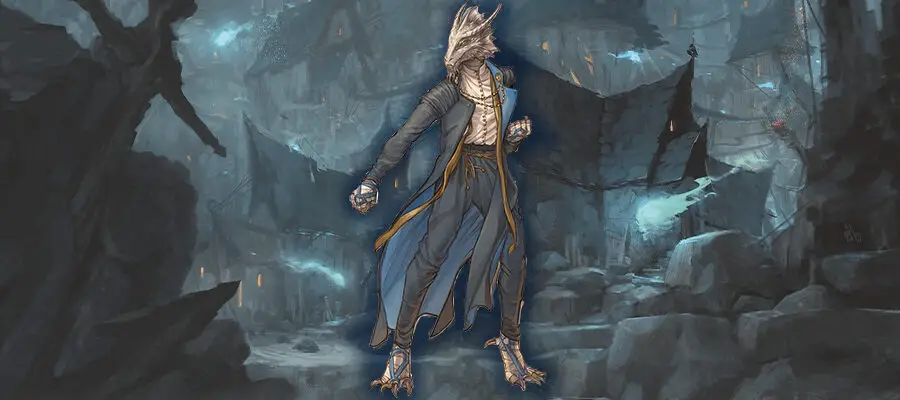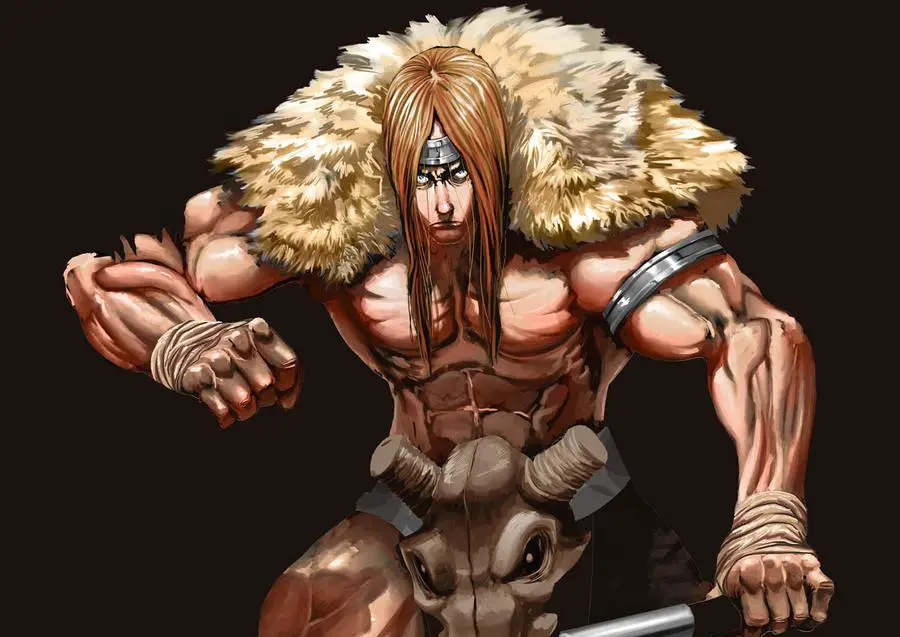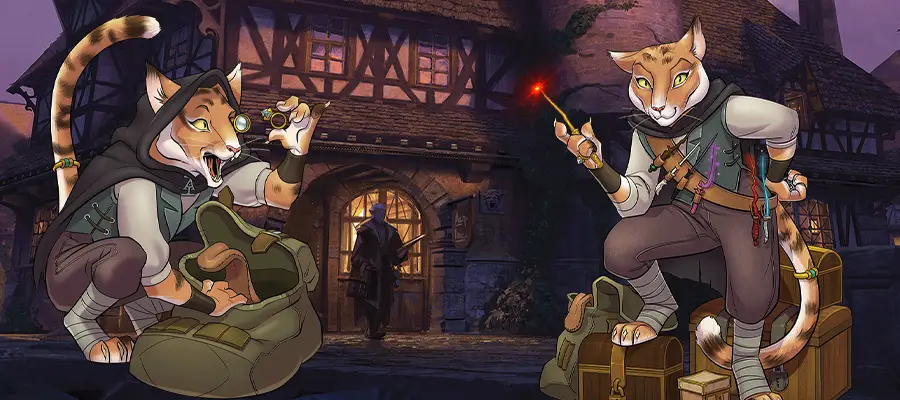This article’s featured image for D&D 5e Monk Subclass Ratings Ranked Best to Worst is a combination of images from Waterdeep: Dungeon of the Made Mage and Critical Role Presents: Call of the Netherdeep. This article contains affiliate links that add gold to our coffers.
Premise and Rating System
I’m rating each subclass based on the game overall for Monks only, so I’m not comparing a Monk subclass to a Wizard subclass. That wouldn’t feel fair. I also rate each subclass based on five criteria:
- High-level Functionality: How well the subclass functions and keeps up with other options beyond level ten.
- Low-level Functionality: How well the subclass functions and keeps up with other options between levels one to nine. The subclass might be a strong multiclass dip option.
- Versatility & Fun: The subclass offers multiple ways to play it without making a player feel stuck. Features are enjoyable and cohesive.
- Design & Accessibility: I favor character options that are easy to understand and use. If they’re innovative and unique to other character options in the game, even better. A subclass that reinvents or reinvigorates neglected game mechanics receives top marks.
- Lore & Roleplaying: Subclasses that evoke fantastic stories, can be flavored in a variety of ways, and are easy to imagine conceptually.
This clearly isn’t a science, but it’s the system that works for me! It also helps me to be objective and not feel burdened by community perceptions.
Skip to Your Favorite Monk Rating
— Ascendant Dragon
— Astral Self
— Drunken Master
— Four Elements
— Kensei
— Long Death
— Mercy
— Open Hand
— Shadow
— Sun Soul
Quick Poll: Favorite Monks from the 5e Community
Before or after you read through my Monk subclass ratings, let us know which is your favorite! Voting will reveal the votes of others, too.
Ascendant Dragon Monk Subclass Rating (FToD)
Summary of subclass features: Deal elemental damage with unarmed strikes and bolster your Persuasion and Intimidation checks. Speak the Draconic language. Use a breath weapon. Sprout temporary wings that allow you to fly each turn, but not between. Gain elemental resistance and use dragon-like fear effects. Augment your breath and transformations at high levels, and gain blindsight.
- High-level Functionality: ★★
- Low-level Functionality: ★★★★
- Versatility & Fun: ★★★
- Design & Accessibility: ★★★
- Lore & Roleplaying: ★★★★
Flutes’ Evaluation (3/5):
Many players love dragons, and this subclass disappointed many of them.
I like the ability to freely change unarmed strike damage to elemental damage types. This can help against enemies like lycanthropes who are immune to non-magical weapons. This may matter less at higher levels unless you fight a mummy that is vulnerable to fire damage. Draconic Presence and Tongue of Dragons that you also get at level three are mostly ribbon features.
Breath of the Dragon is sad. It’s good that it can flow with the attacking action economy, but the damage is poor. I appreciate that it can be used PB times per long rest before requiring ki points to use it again. The damage type and area are flexible. In the end, it’s a mixed bag with Breath of the Dragon. I’ve played with people who used it and were sad about the damage. It was almost like I was back in 2014 again when my fellow players were visibly deflated when they chose Dragonborn but dealt pitiful little damage. History repeats itself.
Wings Unfurled is a temporary flight when using Step of the Wind. That means it’s locked behind ki points, and it can’t be used more than PB times per long rest. It’s an ok feature, but many recent subclasses get better flight than this. I don’t know why the Monk is neglected again.
Aspect of the Wyrm is such a small aura that I can hardly imagine the damage resistance helping anyone but yourself. The frightening aura, however, could be fantastic if used at the right moment.
Ascendant Aspect is a really late time to get blindsight, though this subclass deserves it. Better late than never. The augmenting effects are not exciting at level seventeen.
As I said, it’s a disappointing subclass. Players love dragons, so they had high hopes for this one. It’s not the worst thing ever; I wish it added more to the Monk gameplay style than it does.
Astral Self Monk Subclass Rating (TCoE)
Summary of subclass features: Use ki points to manifest astral body parts that rely on your Wisdom score and each gives you different benefits. Arms use Wisdom for attacks and Strength checks/saves while utilizing reach and force damage. The mask/helmet affords you darkvision and sight through magical darkness, advantage on Insight and Intimidation checks, targeted whisper speech, and voice amplification. The body allows you to deflect damage from fire, cold, acid, force, lightning, and thunder damage types, and a slight damage boost to unarmed strikes. You can eventually spend more ki to summon all parts at once with +2 AC and another attack each round.
- High-level Functionality: ★★★
- Low-level Functionality: ★★★★
- Versatility & Fun: ★★
- Design & Accessibility: ★★★★
- Lore & Roleplaying: ★★★★★
Flutes’ Evaluation (4/5):
This is a subclass I want to love, but it has weaknesses. Getting into battle mode costs ki points, and you can lose battle mode if you become incapacitated or waste time.
I love making Wisdom the stat of focus while the battle mode is up. Some of the other benefits are similarly fantastic. Gaining vision in magical darkness is rare and exciting for its potential synergies with the team. I also like the elemental damage reduction and force damage. The reach of ten feet on the astral arms is important for the mid-liner Monk role, so that’s smart.
The problem is that you’ll still want to invest in Dexterity for times when you’re not manifesting your astral self. You’re not free from needing Dexterity! The payoff is often minor for manifesting astral portions.
The capstone at level seventeen is bizarre. I don’t know why it costs five ki points to be slightly better than the two ki points that it takes to manifest everything else. Bogus!
I feel cheated with this subclass. It’s such a cool concept, but every step of the way seems to have something missing. The Astral Self Monk isn’t versatile because it’s stuck using unarmed strikes with the astral arms if it wants to enjoy the subclass. I still rate it highly because I can see the possibilities, but it’s not a subclass for new players. It barely rates high enough to get a score of four.
Drunken Master Monk Subclass Rating (XGtE)
Summary of subclass features: Proficiency with brewer’s supplies and Performance. Flurry of Blows comes with a free Disengage and a ten-foot movement boost. Standing up from prone takes five feet of movement. Redirect missed enemy attacks. Cancel disadvantage out using ki. Add three attacks to Flurry of Blows if each flurried attack (5) targets different creatures.
- High-level Functionality: ★★
- Low-level Functionality: ★★★★
- Versatility & Fun: ★★★
- Design & Accessibility: ★★★
- Lore & Roleplaying: ★★★★
Flutes’ Evaluation (3/5):
I like this subclass much more than I remembered. There is a playstyle here that I can get behind.
It starts at level three with proficiencies and a Disengage option with a speed boost after using Flurry of Blows. This is similar to how the Open Hand Monk can remove a reaction from an enemy to move away after an attack. Since I see Monks as mid-liners who want to harass enemies while baiting them into bad positions and chases, I like this a lot.
Tipsy Sway at level six can be fun. You can punish enemies for rushing you at the mid-line, or you can provoke an opportunity attack that you think will miss so you can redirect it. Getting up from prone with less movement can be useful for dropping prone to avoid ranged attacks between your turns.
At higher levels, this subclass becomes less fun, but it’s not horrible. Drunkard’s Luck probably shouldn’t cost ki points, but it does. It’s the ki point tax that disappoints me with a mediocre benefit. Intoxicated Fury is disappointing, but it can be useful if you need to attempt Stunning Stike against a group of enemies. It’s usually better to focus on killing one enemy, so being required to attack many to get use form this makes it inherently niche.
I believe this subclass is meant for players who understand the playstyle they want. It relies heavily on Flurry of Blows as most Monks do. It’s not versatile, so it might be difficult to play this to high levels without wanting to multiclass or make a new character. If this subclass had one or two more features or benefits to it, its ratings could go way up. It hurts me to rate it lower than the Kensei (I like this better), so I’d like to see the Drunken Master buffed.
Four Elements Monk Subclass Rating (PHB)
Summary of subclass features: Cast elemental spells and gain elemental augmentations using your ki points.
- High-level Functionality: ★★★
- Low-level Functionality: ★★
- Versatility & Fun: ★★★
- Design & Accessibility: ★★★
- Lore & Roleplaying: ★★★★★
Flutes’ Evaluation (3/5):
This subclass is notorious for focusing on a popular fantasy, but completely squandering it. The spellcasting options it gets for its ki points often come too late and cost too much. However, there are some interesting spells and features.
TCoE passively buffed the Four Elements Monk by introducing a new Monk feature called Ki-Fueled Attack. It allows the Four Elements Monk to also attack as a bonus action after casting spells with ki points. This is a simple, welcome improvement.
In the end, spellcasting is good. Most Monks don’t have Fly or Gaseous Form options. This Monk still does all the Monk things but has more options. Its design is mediocre, but I wouldn’t be sad to play it.
Kensei Monk Subclass Rating (XGtE)
Summary of subclass features: Gain proficiency with either calligrapher’s supplies or painter’s supplies. Bond your ki to a weapon to become more deadly with it. Use weapons more effectively to defend yourself or deal damage. Count your Kensei weapons as magical and deal more damage with ki spent. Effectively enchant your weapon with bonuses based on your ki spent. Reroll a missed attack once per turn.
- High-level Functionality: ★★★
- Low-level Functionality: ★★★★
- Versatility & Fun: ★★★★
- Design & Accessibility: ★★★
- Lore & Roleplaying: ★★★
Flutes’ Evaluation (3/5):
From my perspective, this has been a player favorite since it came out. However, when I actually read what it does, I find it profoundly boring.
As you level up, you can choose more weapons to be your Kensei weapons. This almost never matters because players will specialize in a weapon of choice from the start. Many of the features also won’t apply to magic items, so your subclass partially becomes obsolete.
I like that the Kensei can parry for an AC bonus in melee and add damage to ranged weapon attacks (even if not much). Most Monks lack specialties in ranged attacks, so this fills a niche. Rerolling missed attacks at high levels without a resource tax is nice, though not exciting.
I like that this subclass isn’t starved for ki points. Since many of the features can function without ki, it’s ratings will benefit.
One of the worst things about this subclass is that Monks all get Dedicated Weapon from TCoE, making Kensei less unique.
Long Death Monk Subclass Rating (SCAG)
Summary of subclass features: Gain temporary hitpoints when you slay a foe. Terrify nearby creatures (even allies); they become frightened of you until your next turn ends if they fail a Wisdom saving throw. Use a ki point to remain at one hit point when you’d normally reach zero. Deal damage with 1-10 ki points to stack 2d10 necrotic damage with a Constitution saving throw for half damage.
- High-level Functionality: ★★★★
- Low-level Functionality: ★★★
- Versatility & Fun: ★★★
- Design & Accessibility: ★★
- Lore & Roleplaying: ★★★★★
Flutes’ Evaluation (3/5):
This is an interesting one.
Touch of Death has what designers call a “bag of rats” issue, meaning the character can kill anything to benefit, no matter how small. The Long Death Monk could gain temporary hit points in between battles by swatting a fly or eating a rat. It doesn’t get extra power to slay enemies and gain temporary hit points, but I like how it scales the temporary hp.
Hour of Reaping has a friendly fire problem, but it doesn’t cost ki points. This could turn the tide or set the stage. It’s hard to predict how good or bad it is, but I recommend the player consider which enemies may or may not be susceptible to fear.
Mastery of Death is interesting because it’s only limited by ki points. You can use it over and over again to actually persist in a fight. I don’t know how powerful it is, but I really like it.
Touch of the Long Death feels like the Open Hand Monk’s Quivering Palm. It’s a big Monk attack that can entice players. It always hits, but it requires a Constitution saving throw. It’s not all or nothing, offering half damage when the enemy succeeds. The damage is not too impressive, though. This feels like a missed opportunity.
Overall, this subclass is mostly forgotten as most SCAG options are, but this one is surprisingly cool. It clearly didn’t excite many players, and it’s not a powerhouse, but it’s unique.
Mercy Monk Subclass Rating (TCoE)
Summary of subclass features: Mix up your martial attacks with harmful necrotic damage or helpful healing. Become proficient with herbalist kits. Cure common status conditions and eventually raise the dead.
- High-level Functionality: ★★★★★
- Low-level Functionality: ★★★★★
- Versatility & Fun: ★★★★
- Design & Accessibility: ★★★★
- Lore & Roleplaying: ★★★★★
Flutes’ Evaluation (5/5):
This subclass sets a new standard for proper Monk subclass design. It doesn’t tack on new ki point taxes to do what it does. It is friendly with Flurry of Blows. You can weave healing and extra damage with your attacks. Most Monk archetypes have to choose between core Monk options and their subclass options. That’s what makes this subclass top-tier; it doesn’t need to choose (usually).
I don’t always like subclasses that progress by upgrading their abilities instead of gaining new ones, but Mercy Monk is an exception. Each of its upgrades is properly enticing. Eventually raising the dead is icing on the cake for a Monk. The progression is superb, the theme is immersible, and the efficiency is desirable.
Open Hand Monk Subclass Rating (PHB)
Summary of subclass features: Empower Flurry of Blows to knock prone (Dex save), push fifteen feet (Strength save), or remove reaction capability for a turn. Heal yourself as an action. Gain the effect of the Sanctuary spell. Perform a death strike that potentially kills but might at least deal heavy necrotic damage.
- High-level Functionality: ★★★
- Low-level Functionality: ★★★★★
- Versatility & Fun: ★★★★
- Design & Accessibility: ★★★★
- Lore & Roleplaying: ★★★★
Flutes’ Evaluation (4/5):
This subclass has been overshadowed by power creep in D&D 5e, but it was solid back in the day. Open Hand Technique enhanced Flurry of Blows with no extra ki point tax. At low levels, this subclass holds its own compared to other Monk archetypes. Kiting tactics are more viable with this subclass because Flurry of Blows can remove reactions, allowing the character to freely move away. No Mobile feat required! No Step of the Wind to crowd the bonus action economy.
Wholeness of Body is interesting because the Monk already doesn’t fit well with how D&D 5e is played. The game was designed around short rests between long rests, but most gaming groups don’t utilize short rests. If short rests were utilized, this Monk would be excellent at healing itself with Hit Dice and Wholeness of Body. Instead, it often has to settle for WoB alone.
Tranquility is a cool feature to default protect yourself. I like subclasses that transform a spell to make it unique. It’s not something I’d look forward to when leveling up, but it feels cool.
Quivering Palm is something that will get many players excited. It has its limitations, but players love this stuff. I played a Monk in Baldur’s Gate 2, and I was disappointed at how often Quivering Palm failed back then. It was like I was making regular attacks. The 5e version might perform better. Regardless, this is something players look forward to at high levels.
To me, this is what a Monk should be. If the Monk class performed better as a chassis, this subclass would stand out. It’s no longer the most powerful, useful option, but it deserves respect.
Shadow Monk Subclass Rating (PHB)
Summary of subclass features: Cast several spells with your ki. Teleport freely between zones of dim light or darkness as a bonus action and gain advantage as you ambush. Eventually, gain an invisibility option in the dark and a reaction attack when nearby enemies are struck.
- High-level Functionality: ★★★
- Low-level Functionality: ★★★★
- Versatility & Fun: ★★★
- Design & Accessibility: ★★★★
- Lore & Roleplaying: ★★★★
Flutes’ Evaluation (4/5):
Many critics of this subclass don’t like that it doesn’t get darkvision or the ability to see through the magical darkness it can conjure. It might be good to homebrew that with your DM. Otherwise, it still gets Pass without Trace, an excellent spell to set your team up for ambushes.
Shadow Step is the most exciting feature of the Shadow Monk. This is one of the few Monk subclass features that doesn’t pay ki point tax. You can freely teleport around (very cool), and even gain advantage on an attack. In my opinion, this is the reason to play this subclass.
Cloak of Shadows is a similarly useful feature. It doesn’t require ki points. Invisibility is useful.
Opportunist is a garbage capstone, so I’d probably multiclass before hitting level seventeen.
Overall, the theme is consistent and popular. This subclass is one of the most played Monk archetypes for a reason. It has its flaws, and it isn’t a powerhouse, but it matches what many players are looking for. It has some traps that I’ve seen new players trip on, so expectations need to be realistically set.
Sun Soul Monk Subclass Rating (XGtE)
Summary of subclass features: Shoot lasers that deal martial arts damage, and they become compatible with Extra Attack. Use ki to cast Burning Hands as a bonus action. Act to create an orb that you hurl to explode with radiant damage with a Constitution saving throw to take 2d6 radiant damage, and you can spend ki points to increase the damage. Glow brightly and control nearby lights while dealing radiant damage as a reaction when you’re struck.
- High-level Functionality: ★
- Low-level Functionality: ★
- Versatility & Fun: ★
- Design & Accessibility: ★
- Lore & Roleplaying: ★★★
Flutes’ Evaluation (1/5):
Monks already struggle, but this subclass is horrible. Every single feature is a dud. Don’t play this unless you want to challenge yourself.
The sun bolts are weak and not synergistic with anything. Burning hands at level six for ki points is horrendous.
Searing Sunburst will often do no damage or pitiful damage. Sun Shield requires your reaction.
Pathetic! Sun Soul is one of the worst options for character class + subclass in the game.
Monk Subclass Rankings Best to Worst
- Mercy
- Open Hand
- Shadow
- Astral Self
- Long Death
- Kensei
- Drunken Master
- Ascendant Dragon
- Four Elements
- Sun Soul
The ways of Mercy, Open Hand, and Shadow are on top. Ascendant Dragon, Four Elements, and Sun Soul are at the bottom.
What is the worst Monk subclass?
The Sun Soul Monk is comfortably the worst. It doesn’t complement the innate Monk playstyle and its features are weak without versatility. Skip it.
What is the best Monk subclass?
The Mercy Monk is the best at complementing the Monk’s core features while feeling out its own niche. It overcomes many of the design flaws that half of the Monk subclasses suffer from.
Conclusion
I discovered during this review of the Monk subclasses that I’m looking for specific features when I consider Monk characters. Subclasses that allow the Monk to move in, attack, and move away again without demanding ki points or action economy to retreat are favored. I want Monks to function in the mid-line as supportive harassers. They can attempt Stunning Strike while remaining mobile and able to avoid unnecessary danger.
Subclasses that enhance Monk damage or give them new tricks while enabling the mid-line harassment style. The Mercy Monk somewhat overcomes this by being an efficient conserver of ki points while gaining new tricks.
How do you think I did with my ratings and rankings? I was semi-surprised at how mine turned out. Cast Message in the comments below if you think I nailed it or I missed something.
Click here for more content about Monks of D&D 5e. Thanks for reading, and good luck in your adventures.!





finally!
Had to get it done eventually! 😛